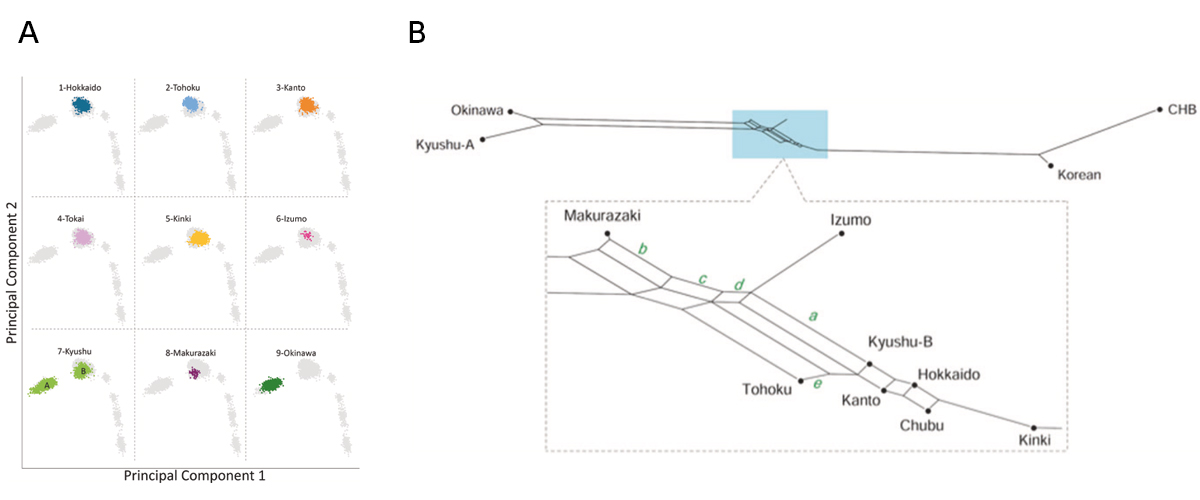Inner-dual structure of modern Yaponesians (people in Japanese Archipelago)
Press release
Genome-wide SNP data of Izumo and Makurazaki populations support inner-dual structure model for origin of Yamato people
Timothy Jinam, Yosuke Kawai, Yoichiro Kamatani, Shunro Sonoda, Kanro Makisumi, Hideya Sameshima, Katsushi Tokunaga, and Naruya Saitou
Journal of Human Genetics 2021 January 25. DOI:10.1038/s10038-020-00898-3
Press release (In Japanese only)
The “Dual Structure” model on the formation of the modern Japanese population assumes that the indigenous hunter- gathering population (symbolized as Jomon people) admixed with rice-farming population (symbolized as Yayoi people) who migrated from the Asian continent after the Yayoi period started. The Jomon component remained high both in Ainu and Okinawa people who mainly reside in northern and southern Japan, respectively, while the Yayoi component is higher in the mainland Japanese (Yamato people). The model has been well supported by genetic data, but the Yamato population was mostly represented by people from Tokyo area. We generated new genome-wide SNP data using Japonica Array for 45 individuals in Izumo City of Shimane Prefecture and for 72 individuals in Makurazaki City of Kagoshima Prefecture in Southern Kyushu, and compared these data with those of other human populations in East Asia, including BioBank Japan data. Using principal component analysis, phylogenetic network, and f4 tests, we found that Izumo, Makurazaki, and Tohoku populations are slightly differentiated from Kanto (including Tokyo), Tokai, and Kinki regions. These results suggest the substructure within Mainland Japanese maybe caused by multiple migration events from the Asian continent following the Jomon period, and we propose a modified version of “Dual Structure” model called the “Inner-Dual Structure” model.
This study was supported by SOKENDAI Cooperative Research grant on modern human evolution, MEXT Grant-in-aid for Scientific Research on Innovative Areas “Yaponesian Genome” (grant number 18H05505), cooperative research of the Inter-University Research Institutions (grant number I- URIC18P01), and a cooperative research with Genesis Healthcare.

Figure: Genetic relationship of nine Yaponesian populations and some continental populations.
(A) Principal Component Analysis (PCA). DNA data for Izumo (6) and Makurazaki (8) are newly determined, and those for other seven regions are from BioBank Japan. Five continental populations are located at lower right side. Kyushu (7) population is divided into Okinawa cluster A and Yamato cluster B. (B) Phylogenetic network analysis using the Neighbor-Net method. Okinawa and Kyushu-A are located at left and Korean and CHB (Chinese Han in Beijing) are located at right. Makurazaki is the closest to the left cluster followed by Izumo, while Kinki is the closest to the right cluster.















